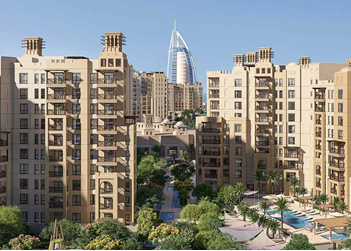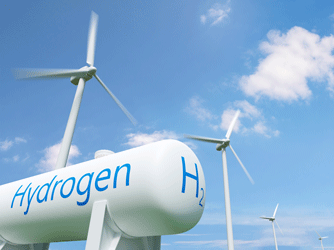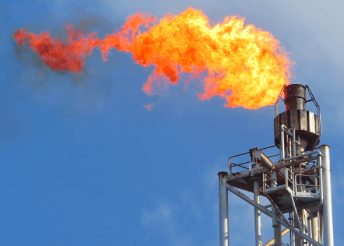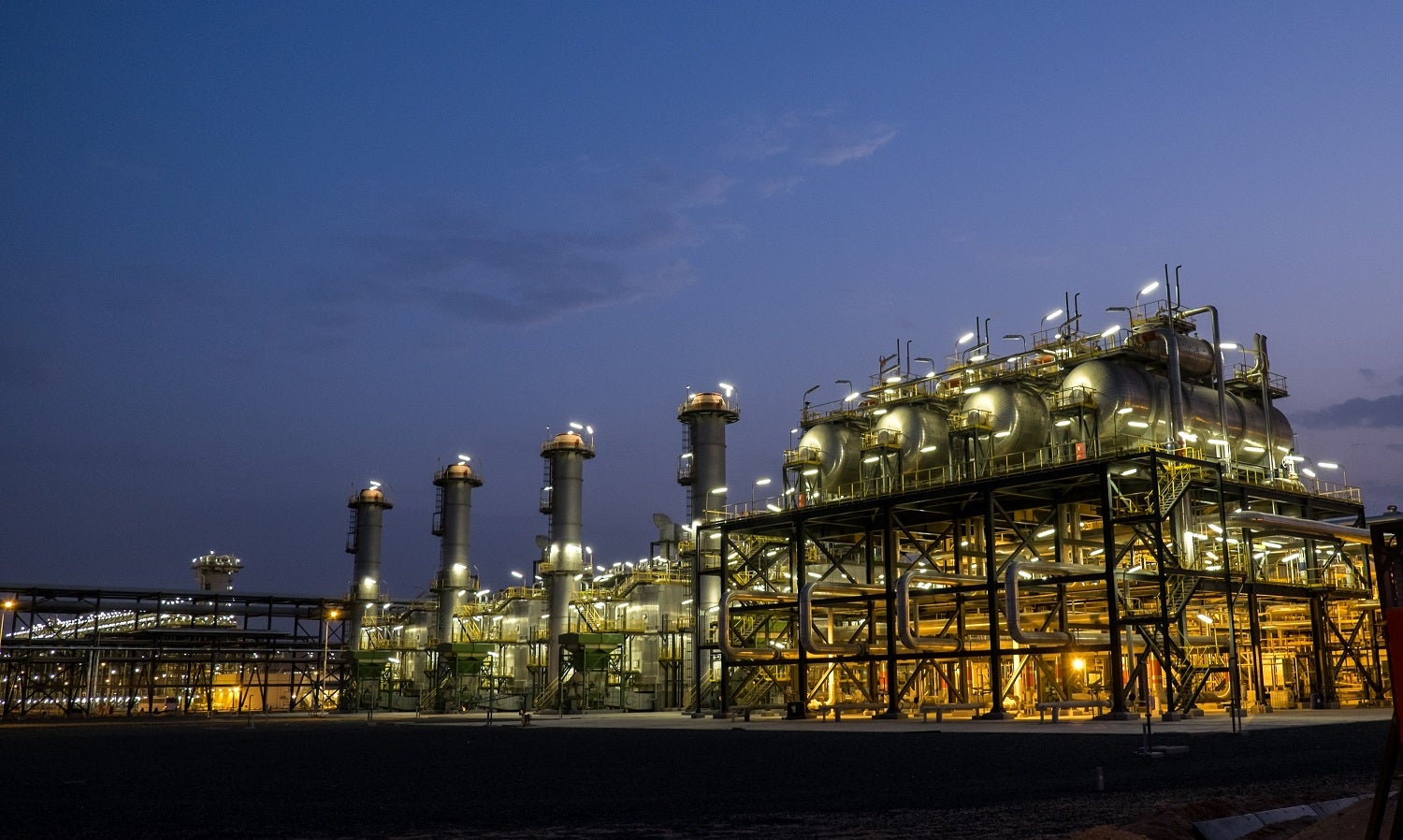Bahrain banking works to scale up
7 November 2024

Bahrain’s banking sector is getting more concentrated. Earlier this year, the local Islamic lender Al-Salam Bank announced the completion of its acquisition of the Bahrain subsidiary of Kuwait Finance House (KFH Bahrain, also sharia-compliant).
Another big merger is in the works in Bahrain. National Bank of Bahrain (NBB), which has a $3.2bn market cap, has been conducting evaluation studies on a proposed merger with its rival Bank of Bahrain & Kuwait (BBK), the latter valued at $2.4bn.
The kingdom’s sharia-compliant sector has been the focus of much of this merger and acquisition (M&A) activity, with NBB getting the ball rolling in 2020 with its acquisition of Bahrain Islamic Bank.
At the end of 2023, KFH and Bahrain-based Ahli United Bank (AUB) completed their union, with the latter’s balance sheet converted to Islamic banking operations, thereby increasing the industry’s market share in Bahrain.
Analysts see these moves as a positive for a sector that has too many lenders relative to the size of the market.
“We see ongoing consolidation in the banking sector as an opportunity to create fewer and stronger banks, which could reduce overcapacity in the system and support profitability,” says an S&P Global Ratings analyst.
“With close to 30 retail banks serving a population of 1.5 million, we believe the system is overbanked, which is one of the main reasons Bahraini authorities have been encouraging banking consolidation.”
Overbanked market
The Bahraini banking system is smaller and relatively more overbanked than its GCC counterparts, with a larger number of domestically incorporated banks relative to its population.
“It wouldn’t be surprising to see more banks joining forces to build scale, creating opportunities whether domestically or regionally,” says Lea Hanna, lead analyst, Financial Institutions Group, Moody’s Ratings.
Consolidation should help Bahraini banks strengthen, building up their balance sheet prowess and improving efficiency by eliminating duplication.
Having another Bahraini bank join the Gulf’s top tier of banks – as the planned NBB-BBK tie-up would do – would also be another big win for the country’s banking sector.
“One key driver for M&A is about achieving scalability. We have seen in multiple GCC systems banks joining forces to create a national champion, allowing it to scale up its operations,” says Hanna.
Local banks are already showing decent metrics, even if not on the scale of the GCC’s more dynamic banking sectors of Saudi Arabia, the UAE and Qatar. Profitability remains strong for most retail banks, supported by higher margins and moderating credit losses.
As S&P notes, some Bahraini banks have seen an increase in their credit losses, but this is related to their activities outside the country.
However, the agency’s analyst notes that margins are likely to moderate in line with interest rate cuts similar to those in other GCC countries. As such, it forecasts a systemwide return on average assets to drop 90-100 basis points (bps) from 110bps in 2023.
“In Bahrain, we expect credit growth to average 3% during 2024-26 as compared to an average of 2% in 2022-23,” says the S&P analyst.
“With the expected decline in interest rates (we expect a total of 225bps cut from the Fed by the end of 2025 inclusive of the 50bps already delivered in Sept), we expect retail sector demand – mainly subsidised housing finance – to support private sector lending growth.”
At the same time, higher non-oil growth is likely to result in some opportunities in corporate lending. According to S&P, Bahraini lending growth is comparable to Kuwait’s, but below that of other GCC countries.
Moody’s expects loan performance to remain relatively unchanged. The ratings agency sees the government’s role as the primary employer maintaining low unemployment levels and supporting asset quality.
“Bahraini banks’ financial performance has been sound and broadly stable across solvency and liquidity indicators. We have a stable outlook assigned to the overall banking system, and that still holds,” says Hanna.
“One area of slight pressure we’re seeing is on profitability. Banks have enjoyed higher margins on the back of rate hikes, and now, with the reversal of the rate cycle, we can expect a bit of margin pressure, even if the easing is really a gradual return to the historical level.”
Emerging challenges
There will be risks to the outlook.
According to S&P, Bahraini banks are mainly funded by domestic deposits, as are their GCC peers. At the same time, Bahraini retail banks’ net external debt more than doubled to 33% of systemwide domestic loans by 31 July 2204, compared with 14% at the end of 2021.
However, with a large portion of the banking sector’s external debt coming from GCC countries – and thus remaining stable – this reduces the risk associated with external debt.
Real estate exposure is one risk facing retail lenders. According to S&P, this segment contributed approximately 1% of total lending, including real estate and construction, or 30% of corporate exposures at the end of August 2024.
“Based on the performance of top retail banks, we expect non-performing loans (NPLs) to increase to about 5.2% in 2024 compared with 4.8% in 2023 due to still high interest rates and subdued real estate demand,” says the S&P analyst.
The agency expects NPLs to moderate slightly in 2025 from an average of 5% in 2023-24, aided by interest rate cuts, a small uptick in real estate transactions and improving hospitality sector performance.
Similarly, under base-case assumptions, credit losses will hover at about 70bps in 2024, up from about 50bps in 2023, and then decline to about 50bps by 2026.
One challenge is related to the limited opportunities in the domestic market.
“On the lending side, the economy is not growing at a pace where banks are provided with huge opportunities. It’s a small and saturated market compared to Saudi Arabia, for example, where the big government-led projects are under way and banks are benefitting from the high credit demand,” says Hanna.
And this is where the M&A activity ticks some important boxes.
Larger entities will have greater reach beyond Bahrain’s borders, giving them a better chance of gaining exposure in larger banking markets across the Middle East and North Africa.
All eyes will be on the NBB-BBK merger and potentially others to follow in 2025.
ECONOMY: Bahrain’s economic growth momentum falters
OIL & GAS: Bapco Energies sets sights on clean energy goals
POWER & WATER: Manama jumpstarts utility sector
CONSTRUCTION: Bahrain construction struggles to keep pace
INDUSTRY: Alba positions for the future
Exclusive from Meed
-
 Gulf seizes AI opportunities
Gulf seizes AI opportunities30 May 2025
-
 Meraas awards Madinat Jumeirah construction deal
Meraas awards Madinat Jumeirah construction deal30 May 2025
-
 Hydrogen’s future may not be so green
Hydrogen’s future may not be so green29 May 2025
-
 Wood wins Iraq oil and gas contracts
Wood wins Iraq oil and gas contracts29 May 2025
-
 BP considers Algeria lubricants plant project
BP considers Algeria lubricants plant project29 May 2025
All of this is only 1% of what MEED.com has to offer
Subscribe now and unlock all the 153,671 articles on MEED.com
- All the latest news, data, and market intelligence across MENA at your fingerprints
- First-hand updates and inside information on projects, clients and competitors that matter to you
- 20 years' archive of information, data, and news for you to access at your convenience
- Strategize to succeed and minimise risks with timely analysis of current and future market trends

Related Articles
-
 Gulf seizes AI opportunities
Gulf seizes AI opportunities30 May 2025

This package also includes: Data centres churn investments
Opportunities to build digital infrastructure – mainly data centres – to support the Gulf’s ambitious artificial intelligence (AI) initiatives jumped in value to about $80bn in mid-May, up from around $20bn at the end of April, thanks to the gigawatt-scale AI campuses announced during US President Donald Trump’s Gulf visit.
These projects provided the final piece of a puzzle relating to the massive power generation capacity buildout in Saudi Arabia and the UAE, which have been overhauling their electricity systems in line with their energy diversification, economic expansion and net-zero targets.
 The planned 5GW AI campus in Abu Dhabi is expected to occupy 26 square kilometres of land when completed. Experts say that in countries with more temperate weather, such a facility would require power equivalent to the consumption of nearly three million homes.
The planned 5GW AI campus in Abu Dhabi is expected to occupy 26 square kilometres of land when completed. Experts say that in countries with more temperate weather, such a facility would require power equivalent to the consumption of nearly three million homes.“This is as much a story about electricity as it is about AI,” Karen Young, senior research scholar at Columbia University’s Centre on Global Energy Policy, tells MEED.
She adds that the UAE leadership was “extremely prescient” to invest in nuclear power many years ago, perhaps understanding that a surplus of electricity would be key to future growth and industrial policy.
“But these things are expensive, and are easier to permit and build in the UAE because of the concentration of funding and decision-making,” she says. “It's proving a major advantage in the AI race and construction of data centres.”
Attractive asset class
Data centres are often considered part utility assets – similar to delivering gas, electricity, water and telecoms services – and part real estate assets, due to the rents they yield from tenants.
“Yet a lot of the talk … now concerns how investors look at data centres as assets,” a partner at an international law firm with an office in Riyadh says, “because they are neither utility nor real estate”.
However they are defined, the gap in digital infrastructure to support AI advancements is driving investments in data centre projects in the Middle East.
“The opportunity is ripe,” says Sherif Elkholy, partner and head of Middle East and Africa at UK-based private equity and investment firm Actis.
In addition to the sovereign wealth funds in Saudi Arabia and Abu Dhabi, family offices such as Saudi Arabia’s Vision Invest and international private equity firms are getting their feet wet in the rapidly expanding Gulf data centre market.
Actis, for example, is looking at credible local partners, with a platform or portfolio of operating as well as greenfield assets. US-based KKR acquired a stake in UAE-based Gulf Data Hub earlier this year.
“Historically, the region has been an exporter of capital, but today there is a concerted effort to attract foreign direct investments, particularly into Saudi Arabia. The strategy now is how can the region become an importer of value-added capital to support their 2030 visions?” says Elkholy.
Part of the answer lies in opening the sector to private investors and capital. According to Elkholy, the Middle East has very ambitious energy transition, digital infrastructure, desalination and district cooling projects, and the private sector is now playing a central role in delivering these.
“The mood of international investors has been to avoid risks due to global uncertainties, such as we have now, but the reality is there is a major infrastructure gap, and addressing this, especially given the 2030 targets, requires private sector participation.”
Data sovereignty
Uncertainty over data sovereignty issues across the Gulf states is yet another issue investors have had to grapple with.
Although the GCC countries have had stringent data localisation laws in place for almost a decade now, that does not seem to have dampened growing investments in data centre projects in the region, according to Nic Roudev, who leads UK-based legal firm Linklaters’ TMT practice in the Middle East.
“While data localisation requirements prevent the most efficient operational configurations, where data centres capacity is deployed in one country to service demand across the entire region, it also presents hyperscalers with opportunities to build out robust operations in each of the major GCC countries,” says Roudev.
This allows firms to take advantage of incentives for local presence, such as access to government procurement contracts and financing opportunities.
“Demonstrating commitment to the particular country’s economy by establishing and growing local operations also allows data centre investors to build durable strategic partnership relations with regulatory and government authorities, which can lead to a decrease in long-term regulatory and business uncertainty,” the executive says.
The heat and climate effects will continue to be a thorn for future Gulf data centre development and investments
Karen Young, Columbia University’s Centre on Global Energy PolicyImproving regulations
It's not all perfect, though, Young suggests, citing that the heat and climate effects will continue to be a thorn for future Gulf data centre development and investments.
“There is also the rather poor track record of exporting, trading and sharing electricity within the UAE and the GCC, and thinking about export to third countries… so that makes the idea of data centres and even data traffic via cables a little more complicated,” she explains.
From a regulatory viewpoint, Roudev says the main unique risk factors that data centre investors in the GCC typically have to wrestle with stem mostly from the usually non-transparent and frequently hard to predict legislative and regulatory rule-making and enforcement.
However, Roudev also notes that “in recent years there has been a marked trend in both the UAE and Saudi Arabia for increasing transparency by opening draft laws and regulations to public consultations and actively soliciting input from key industry stakeholders.”
A good example of this in Saudi Arabia has been the development of one of the key regulatory instruments for cloud computing services, which went through “a series of sudden and significant revisions, and the data protection law, which underwent unexpected but considerable revisions after remaining suspended for a year”.
Regulatory enforcement actions in the GCC, which have traditionally not been publicised, have also shifted, with an evident attempt in recent years to increase transparency and predictability of enforcement by authorities in both countries, concludes Roudev.
https://image.digitalinsightresearch.in/uploads/NewsArticle/13939315/main.jpg -
 Meraas awards Madinat Jumeirah construction deal
Meraas awards Madinat Jumeirah construction deal30 May 2025
Dubai-based real estate developer Meraas Holding, part of Dubai Holding, has awarded a AED300m ($82m) contract for the main construction works on Elara, which is Phase 7 of the Madinat Jumeirah Living masterplan in Dubai.
The contract was awarded to the local firm Al-Sahel Contracting Company.
Elara will feature three residential towers offering 234 apartments.
Construction is expected to start immediately, and the project is scheduled for completion by the end of 2026.
Earlier this month, Meeras awarded Bhatia General Contracting a contract to construct the fourth phase of the Nad Al-Sheba Gardens community in Dubai, worth AED690m ($188m).
The scope of the contract covers the construction of 92 townhouses, 96 villas and two pool houses.
In March, Meraas awarded Abu Dhabi-based Arabian Construction Company an estimated AED2bn contract ($544m) to build its Design Quarter residential project in Dubai Design District.
The development will comprise three buildings offering over 558 residential apartments. Construction is expected to be completed in 2027.
The UAE’s heightened real estate activity is in line with UK analytics firm GlobalData’s forecast that the construction industry in the country will register annual growth of 3.9% in 2025-27, supported by investments in infrastructure, renewable energy, oil and gas, housing, industrial and tourism projects.
The residential construction sector is expected to record an annual average growth rate of 2.7% in 2025-28, supported by private investments in the residential housing sector, along with government initiatives to meet rising housing demand.

MEED’s May 2025 report on the UAE includes:
> COMMENT: UAE is poised to weather the storm
> GOVERNMENT & ECONOMY: UAE looks to economic longevity
> BANKING: UAE banks dig in for new era
> UPSTREAM: Adnoc in cruise control with oil and gas targets
> DOWNSTREAM: Abu Dhabi chemicals sector sees relentless growth
> POWER: AI accelerates UAE power generation projects sector
> CONSTRUCTION: Dubai construction continues to lead region
> TRANSPORT: UAE accelerates its $60bn transport push
> DATABANK: UAE growth prospects head northhttps://image.digitalinsightresearch.in/uploads/NewsArticle/13981791/main.png -
 Hydrogen’s future may not be so green
Hydrogen’s future may not be so green29 May 2025
 Commentary
Commentary
Jennifer Aguinaldo
Energy & technology editorMuch has changed in the region’s hydrogen landscape since the first projects were launched in a flurry of excitement.
Initially, in anticipation of demand for low-carbon fuel arising from Asia and Europe by the early 2030s, aspiring green hubs such as Egypt, Morocco, Abu Dhabi and Saudi Arabia announced batches of large-scale green hydrogen and ammonia projects.
Two or three of these have progressed. At Neom, the world’s largest and most ambitious green hydrogen and ammonia production plant is under construction. The $8.4bn project reached financial close in May 2023, achieved a 60% completion rate in December, and appears on track to meet the company’s 2026 target commercial operation date.
In Oman, meanwhile, where the sultanate’s third hydrogen block land auction is ongoing, developers and downstream companies are expected to submit bids sometime this year.
However, across the Middle East and North Africa region, most of the projects announced in the past few years remain in the concept or preliminary design stages, while the rest have not moved beyond signing the memorandums of understanding.
With the exception of Oman, there have been few announcements on new green hydrogen projects in the region over the past 12 months.
Shareholders have even revolted over clean hydrogen plans. Seifi Ghasemi, former CEO of Air Products, which co-owns the Neom Green Hydrogen Company, along with Saudi utility developer Acwa Power and gigaproject developer Neom, was removed from the firm’s board earlier this year, with sources citing the company shareholders’ opposition to the firm’s green hydrogen plans.
In addition to being a co-owner, Air Products is also the main offtaker, contractor and systems integrator of the Neom green hydrogen project.
Cost issue
The main issue for these projects remains the cost of production, according to Michael Liebreich, managing partner at UK firm EcoPragma Capita.
“If green ammonia is going to work anywhere, it should be [in] Oman and the GCC,” he explains. However, the London-based executive and entrepreneur has doubts about green hydrogen’s economics.
Earlier this year, his conversations with “a number of participants in green hydrogen and ammonia projects” indicate that the costs they are able to achieve today come to around $6 a kilogram (kg), and potentially $4/kg in five years for projects coming online in the early 2030s.
“They talk about $3/kg or $2.5/kg, but you could only get there by offering incentives such as subsidies, concessionary finance, free land, free infrastructure and offtake guarantees,” notes Liebreich.
While the region has very cheap solar power, a $15 a megawatt-hour (MWh) solar tariff does not necessarily lead to cheap hydrogen because it is only available roughly 25% of the time. To get to 24/7, one needs batteries, and in jurisdictions like Abu Dhabi, this will take the price to roughly $50/MWh.
Adds Liebreich: “And since you need 50kWh of power per kilogram of hydrogen, assuming an 80% efficiency, that means you have $2.50/kg just of electricity cost. No capex, no maintenance, no compression, no pipelines, nothing. So $4/kg looks like being a floor price for a long time; $3/kg would be the outside edge of achievable.”
Meanwhile, fossil gas at around $1-1.50/kg creates an extra cost of $2.50/kg, which means that anyone producing a million tonnes of green hydrogen a year has to cover the extra cost of $2.5bn a year and find at least 15 years of guaranteed offtake to get the project built.
“You need to secure 15 years of support to close the cost gap of $37.5bn. You need it guaranteed upfront by someone with a bullet-proof balance sheet – so that’s either a government or sovereign wealth fund.”
The near-impossibility of exporting liquid hydrogen to Europe due to prohibitive costs and inefficiency of liquefying the hydrogen should also be considered.
In comparison, a more feasible option could be putting ammonia on a ship to Europe, where it could benefit from a Carbon Border Adjustment Mechanism (CBAM) at the same price as a tonne of carbon under EU-ETS.
According to Liebreich, under this scenario, each kilogram of green hydrogen reduces emissions by around 9kg, and the EU-ETS price today is €72 ($81)/tonne.
“So each kilogram of green hydrogen will avoid a carbon price of $0.009 x 81, which is equal to $0.72. That closes your gap, so a tonne of green ammonia is now only $320 more than a tonne of grey, or only double the price,” Liebreich explains.
“Look at it another way, if you want to export 1 million tonnes of hydrogen as ammonia a year into Europe, you are still looking at an annual cost gap of $1.8bn after taking the EU-ETS CBAM into account. And you need a 15-year deal, so that’s $27bn,” he notes, under the assumption one can get the hydrogen price down to $4/kg.
Far from being rosy, Liebreich concludes that green hydrogen-wise, the region could be heading down a blind alley. “There will be almost no import market for green hydrogen or its derivatives because, in the best scenario, they will remain too expensive.”
Bright side
Liebreich’s dour forecast collides with the vision of most regional stakeholders that net zero by 2050 will not be possible without low-carbon, and particularly green, hydrogen and its derivatives, including green ammonia, methanol and sustainable aviation fuel.
Mohammad Abdelqader El-Ramahi, chief green hydrogen officer at Abu Dhabi Future Energy Company (Masdar), for instance, told MEED in October that green hydrogen is the most important driver and enabler of net zero and decarbonisation. “Very few people know that electrification alone can address no more than 30% of our decarbonisation [needs], even if we install all sorts of renewable sources,” he said.
Abu Dhabi intends to replicate its success in the energy sector’s previous four waves – oil and gas in the 1960s, liquefied natural gas and anti-flaring in the 1970s, renewable energy in the 2000s and nuclear energy in the 2020s – in the sector’s fifth low-carbon hydrogen wave.
The list of Masdar’s potential green hydrogen partners includes Ireland-headquartered Linde; France’s TotalEnergies; the UK’s BP; Austria’s Verbund; and Japan’s Mitsui, Osaka Gas, Mitsubishi Chemical, Inpex and Toyo Gas.
Despite the slow progress and major reality check, hope proverbially springs. “Green hydrogen is the inevitable future fuel,” El-Ramahi asserted.
 https://image.digitalinsightresearch.in/uploads/NewsArticle/13956351/main.gif
https://image.digitalinsightresearch.in/uploads/NewsArticle/13956351/main.gif -
 Wood wins Iraq oil and gas contracts
Wood wins Iraq oil and gas contracts29 May 2025
The UK-based engineering company Wood has been awarded a series of decarbonisation contracts with a total value of about $100m for flare gas reduction and carbon efficiency project solutions across Iraq’s largest oil fields.
Under the terms of the contracts, Wood will deliver brownfield engineering, procurement and construction (EPC) and modifications solutions to “enhance operational efficiency and minimise environmental impacts”, according to statement released by the company.
In its statement, Wood said that the projects would support Iraq’s commitment to reduce gas flaring by 78% by the end of 2025.
Wood has already provided decarbonisation solutions for major operators in Iraq and has implemented the country’s largest flare gas reduction programme to date.
Ellis Renforth, Wood’s president of operations for Europe, Middle East and Africa, said: “We are working in partnership with our clients to achieve Iraq’s energy ambitions and deliver a sustainable energy future for the country.
“Wood Iraq has extensive knowledge of our clients’ infrastructure, operations and goals, enabling them to improve operational efficiency and reduce the impact of gas flaring while maintaining critical production.”
The reimbursable contracts will be delivered by Wood’s team in Iraq and the UAE.
The company said it would recruit 60 new employees to support the successful delivery of these projects.
Money problems
Earlier this month, Wood announced that its chairman, Roy Franklin, would step down from the board.
The move comes amid ongoing financial problems at the engineering company, which is working on projects worth tens of billions of dollars across the Middle East and North Africa region.
At the end of April, Wood Group’s shares were suspended on the London Stock Exchange because the company did not publish its accounts for 2024 on time.
Wood employs over 4,000 people in the Middle East, having increased its headcount by 500 in 2024.
MEED’s June 2025 report on Iraq includes:
> COMMENT: Iraq maintains its pace, for now
> ECONOMY: Iraq’s economy faces brewing storm
> OIL & GAS: Iraqi energy project value hits decade-high level
> PIPELINES: Revival of Syrian oil export route could benefit Iraq
> POWER: Iraq power sector turns a page
> CONSTRUCTION: Iraq pours billions into housing and infrastructure projects
> DATABANK: Iraq forecast dips on lower oil priceshttps://image.digitalinsightresearch.in/uploads/NewsArticle/13974910/main.png -
 BP considers Algeria lubricants plant project
BP considers Algeria lubricants plant project29 May 2025

The UK-based oil and gas company BP is considering developing a facility in Algeria to produce products for its Castrol lubricants business, according to industry sources.
BP has been considering developing the facility for some time, but has yet to make a final decision on whether to proceed with the project.
One source said: “BP is continuing to evaluate the business case for developing the facility.”
BP’s upstream business exited Algeria with the sale of its assets to Italy’s Eni in a deal announced in September 2022.
That deal included selling its interests in the gas-producing In Amenas and In Salah concessions.
BP’s Castrol brand serves consumers in more than 150 countries in various sectors, including automotive, marine and industrial.
Its passenger car engine oils include Edge, Magnatec and GTX.
Its products also include commercial vehicle engine oils, transmission fluids, metalworking and machining fluids, production fluids, and specialist greases and lubricants.
https://image.digitalinsightresearch.in/uploads/NewsArticle/13974906/main.jpg


